Black holes are the universe’s ultimate enigma—cosmic vacuum cleaners that swallow everything, even light. They’re the stuff of science fiction, but also the frontier of science fact. Think about it: a place where gravity is so intense that time and space warp beyond recognition. It’s like the universe’s version of a magic trick, except no one knows how it works. And while scientists like Stephen Hawking and Kip Thorne have spent decades trying to decode their secrets, black holes remain stubbornly mysterious. Even Carl Sagan, the poet of the cosmos, once said, “Somewhere, something incredible is waiting to be known.” Could that “something” be the key to understanding black holes?
Enter artificial intelligence (AI), the modern-day Rosetta Stone for cracking cosmic codes. AI has already revolutionized fields like medicine, climate science, and even art. But can it tackle the ultimate challenge: unraveling the physics of black holes and singularities? From simulating the mind-bending environments near event horizons to analyzing the faint whispers of gravitational waves, AI might just be the tool we need to peer into the abyss and come back with answers. This isn’t just about satisfying curiosity—it’s about rewriting the rules of physics as we know them.
In this article, we’ll explore how AI could unlock the secrets of black holes, from decoding the physics of event horizons to probing the nature of singularities. We’ll dive into the cutting-edge technologies and methodologies that could make this possible and outline a roadmap for how AI could tackle these cosmic mysteries. So, buckle up. We’re about to take a journey beyond the event horizon, where the laws of physics break down, and the possibilities are as infinite as the universe itself.
1. The Enigma of Black Holes: What We Know and What We Don’t
1.1 The Basics of Black Holes
Let’s start with the basics. A black hole is a region in space where gravity is so strong that nothing—not even light—can escape its pull. Think of it as a cosmic one-way street: once you cross the event horizon (the point of no return), there’s no turning back. At the center of a black hole lies the singularity, a point where density becomes infinite, and the laws of physics as we know them cease to exist. It’s like the universe’s ultimate “404 Error: Page Not Found.”
The concept of black holes dates back to 1916, when Karl Schwarzschild found a solution to Einstein’s equations of general relativity that predicted their existence. Decades later, Stephen Hawking introduced the idea of Hawking radiation, suggesting that black holes aren’t entirely black—they emit tiny amounts of radiation and could eventually evaporate. But despite these breakthroughs, black holes remain one of the most perplexing phenomena in the universe.
1.2 Current Challenges in Black Hole Research
Studying black holes isn’t exactly a walk in the park. For starters, they’re invisible. We can’t see them directly because, well, they don’t let light escape. Instead, scientists rely on indirect methods, like observing the effects of their gravity on nearby stars or detecting the ripples in spacetime known as gravitational waves. But even these methods have limitations. The signals are often faint, and the distances involved are mind-bogglingly vast. It’s like trying to hear a whisper in a hurricane.
Then there’s the theoretical side. Black holes sit at the intersection of general relativity and quantum mechanics, two theories that don’t play well together. General relativity describes gravity on a cosmic scale, while quantum mechanics deals with the subatomic world. But at the singularity inside a black hole, both theories break down. It’s like trying to use a map of New York City to navigate the surface of Mars—it just doesn’t work.
1.3 Why Black Holes Matter
So, why should we care about black holes? For one, they play a crucial role in the universe. They’re not just cosmic oddities; they’re the engines that power galaxies. Supermassive black holes, like the one at the center of our Milky Way, influence the formation and evolution of galaxies. Without them, the universe as we know it wouldn’t exist.
But black holes are more than just galactic architects. They’re also laboratories for testing the fundamental laws of physics. By studying them, we can learn more about spacetime, gravity, and even the origins of the universe. It’s like having a front-row seat to the greatest show in the cosmos—if only we could figure out how to watch it.
2. The Role of AI in Modern Astrophysics
2.1 AI’s Track Record in Space Exploration
Artificial intelligence isn’t just for chatbots and self-driving cars—it’s also a star player in space exploration. Take NASA’s NASA, for example. They’ve used AI to sift through mountains of data from the Kepler Space Telescope, helping discover thousands of exoplanets. AI algorithms have even classified galaxies faster than a human could say “spiral arms.” And let’s not forget the LIGO and Virgo collaborations, where AI has been instrumental in detecting gravitational waves from black hole mergers. If AI were a scientist, it’d probably have a Nobel Prize by now.
2.2 How AI Complements Traditional Methods
Traditional astrophysics relies on telescopes, math, and a lot of coffee. But AI? It’s like giving scientists a supercharged assistant. Machine learning algorithms can spot patterns in noisy data that would make a human’s brain hurt. Neural networks, for instance, can simulate complex physical systems faster than you can say “Einstein’s equations.” And let’s be honest, who wouldn’t want a robot sidekick to help crunch numbers while you sip your latte?
2.3 AI’s Unique Advantages in Black Hole Research
Black holes are like the ultimate cosmic puzzles, and AI is the ultimate puzzle solver. With its ability to handle massive datasets from telescopes and interferometers, AI can predict and model phenomena that are beyond human intuition. Imagine trying to simulate the chaotic environment near a black hole’s event horizon—AI can do that while you’re still trying to figure out how to pronounce “accretion disk.” Plus, AI doesn’t get tired, bored, or distracted by cat videos. It’s the perfect lab partner.
3. Simulating Black Holes: AI-Powered Models
3.1 The Complexity of Black Hole Simulations
Simulating a black hole isn’t exactly a walk in the park. You’ve got extreme gravitational fields, quantum effects, and the occasional spacetime paradox to deal with. It’s like trying to solve a Rubik’s Cube while riding a roller coaster—blindfolded. Traditional methods struggle to capture the full complexity, but AI? It thrives on chaos. Neural networks can approximate solutions to Einstein’s equations, and generative adversarial networks (GANs) can create realistic black hole models that look like they belong in a sci-fi movie.
3.2 AI-Driven Simulations
AI-driven simulations are the future of black hole research. Neural networks can model the behavior of matter and energy near the event horizon, while GANs can generate realistic images of black holes based on theoretical predictions. It’s like having a virtual telescope that can peer into the heart of a black hole without getting sucked in. And the best part? These simulations can be run over and over again, tweaking variables and testing hypotheses faster than you can say “spaghettification.”
3.3 Case Studies: AI in Action
Let’s talk about the Event Horizon Telescope. This global network of telescopes captured the first-ever image of a black hole in 2019, and AI played a crucial role in processing the data. Without AI, we’d still be staring at a blurry mess. AI has also been used to simulate accretion disks and jet formations, giving us a glimpse into the violent processes that occur near black holes. It’s like having a front-row seat to the most extreme show in the universe.
4. Decoding Gravitational Waves with AI
4.1 What Are Gravitational Waves?
Imagine throwing a pebble into a calm pond. The ripples that spread out are like gravitational waves—tiny disturbances in the fabric of spacetime caused by massive cosmic events. These waves were first predicted by Albert Einstein in 1916 as part of his theory of general relativity, but it took nearly a century for scientists to detect them directly. In 2015, the Laser Interferometer Gravitational-Wave Observatory (LIGO) made history by capturing the faint echoes of two black holes colliding over a billion light-years away.
Gravitational waves are generated by some of the most violent events in the universe:
- Black hole mergers
- Neutron star collisions
- Supernova explosions
These waves carry information about their origins, offering a new way to "listen" to the cosmos. But detecting them is no easy task. The signals are incredibly faint, often buried in a sea of noise. That’s where AI comes in.
4.2 AI’s Role in Gravitational Wave Detection
Detecting gravitational waves is like trying to hear a whisper in a crowded stadium. Traditional methods rely on complex algorithms to filter out noise, but even these can miss subtle signals. Enter AI, which excels at finding patterns in chaotic data. Machine learning algorithms, particularly deep neural networks, have become indispensable tools for analyzing the data from LIGO and its European counterpart, Virgo.
Here’s how AI is revolutionizing gravitational wave detection:
- Real-Time Signal Identification: AI can sift through terabytes of data in real time, flagging potential gravitational wave events faster than traditional methods.
- Noise Reduction: Machine learning models can distinguish between genuine signals and background noise, improving detection accuracy.
- Event Classification: AI can classify the type of event (e.g., black hole merger vs. neutron star collision) based on the waveform.
For example, in 2019, researchers used AI to identify a previously overlooked black hole merger in LIGO data. This discovery showcased AI’s ability to uncover hidden gems in vast datasets.
4.3 Extracting Insights from Gravitational Waves
Once a gravitational wave is detected, the real work begins. Scientists use these signals to infer the properties of the objects that created them. AI plays a crucial role in this process by:
- Estimating Mass and Spin: Machine learning models can analyze the waveform to determine the mass and spin of the colliding black holes or neutron stars.
- Testing Theories of Gravity: By comparing observed waveforms with theoretical predictions, AI can help test alternative theories of gravity.
- Mapping the Universe: Gravitational waves provide a new way to measure cosmic distances, helping us map the universe in unprecedented detail.
One of the most exciting applications of AI in this field is its ability to simulate gravitational wave signals. By training neural networks on synthetic data, researchers can create models that predict what future detections might look like. This not only aids in detection but also helps refine our understanding of the physics behind these cosmic events.
5. Probing Singularities: The Ultimate Frontier
5.1 The Mystery of Singularities
At the heart of every black hole lies a singularity—a point where gravity becomes infinite, and the laws of physics as we know them break down. According to general relativity, a singularity is a region of spacetime where matter is crushed to infinite density, and time and space cease to exist. But what does that really mean? And what happens beyond the event horizon?
Singularities are shrouded in mystery for several reasons:
- Inaccessibility: Once something crosses the event horizon, it can never escape, making direct observation impossible.
- Theoretical Gaps: General relativity and quantum mechanics, our two best theories of physics, give conflicting descriptions of singularities.
- Mathematical Challenges: The equations describing singularities are notoriously difficult to solve, even for supercomputers.
Despite these challenges, singularities hold the key to understanding some of the deepest questions in physics, such as the nature of spacetime and the origins of the universe.
5.2 AI’s Potential to Explore Singularities
If singularities are the ultimate cosmic puzzle, AI might be the ultimate puzzle solver. By combining AI with quantum computing, researchers are beginning to explore what lies beyond the event horizon. Here’s how:
- Quantum AI Simulations: Quantum computers, like those being developed by IBM and Google Quantum AI, can model quantum effects that classical computers cannot. AI algorithms can then analyze these simulations to uncover new insights.
- Hypothetical Scenarios: AI can help explore speculative ideas like wormholes (hypothetical tunnels through spacetime) and white holes (the theoretical opposite of black holes).
- Testing Quantum Gravity: By simulating the behavior of matter and energy near singularities, AI could help bridge the gap between general relativity and quantum mechanics.
For example, researchers at Caltech are using AI to model the quantum properties of black holes, offering a glimpse into what might happen at the singularity.
5.3 Ethical and Philosophical Implications
As we push the boundaries of science with AI, we must also grapple with the ethical and philosophical questions it raises. Can a machine truly understand something as profound as a singularity? And if it does, what does that mean for our understanding of reality?
Here are some thought-provoking questions to consider:
- If AI discovers a new theory of quantum gravity, how will we verify its accuracy?
- What are the limits of AI in exploring the unknowable?
- How do we ensure that AI-driven discoveries are accessible to all, not just a select few?
These questions remind us that science is not just about data and algorithms—it’s about curiosity, imagination, and the human spirit. As we venture into the unknown, let’s not forget the values that drive us forward.
6. AI Solutions: How Would AI Tackle This Issue?
Artificial intelligence has the potential to revolutionize our understanding of black holes by tackling the problem through a multi-pronged, interdisciplinary approach. Here’s how AI could become the ultimate tool for decoding the universe’s most enigmatic phenomena.
6.1 Data Integration and Analysis
Black hole research generates massive datasets from telescopes, gravitational wave detectors like LIGO, and even particle accelerators. AI, particularly deep learning algorithms, can integrate and analyze these complex datasets to identify patterns and anomalies that might elude traditional methods. For instance, AI could sift through petabytes of data from the Event Horizon Telescope to refine our understanding of black hole shadows.
6.2 Advanced Simulations
Simulating black holes requires solving Einstein’s equations under extreme conditions, which is computationally intensive. AI-driven models, such as neural networks, can approximate these solutions faster and more efficiently. Generative adversarial networks (GANs) could be used to create realistic models of black holes and their environments, including accretion disks and relativistic jets. These simulations could help test alternative theories of gravity and explore the quantum effects near singularities.
6.3 Real-Time Monitoring
AI can be deployed to monitor gravitational wave detectors like Virgo and space telescopes in real time. Machine learning algorithms can detect and analyze black hole-related events, such as mergers or gamma-ray bursts, as they happen. This real-time capability could transform how we observe and respond to cosmic phenomena.
6.4 Collaborative Research
Open-source AI tools and platforms can foster collaboration among the global scientific community. By sharing data, models, and algorithms, researchers from diverse fields—such as astrophysics, computer science, and quantum mechanics—can work together to tackle the mysteries of black holes. Initiatives like Black Hole Hunter serve as a model for such collaborative efforts.
6.5 Quantum AI
Quantum computing, combined with AI, could unlock unprecedented capabilities in modeling singularities and quantum gravity. Quantum machine learning algorithms, developed by institutions like Google Quantum AI, could solve problems that are currently intractable for classical computers. This hybrid approach could pave the way for breakthroughs in understanding the extreme physics at the heart of black holes.
Actions Schedule/Roadmap (Day 1 to Year 2)
To harness AI’s potential for black hole research, here’s a detailed roadmap that institutions, governments, and research organizations can follow:
Day 1
- Assemble a multidisciplinary team including astrophysicists, AI researchers, quantum computing experts, and data scientists.
Day 2
- Define project goals, allocate resources, and establish partnerships with institutions like NASA and the European Southern Observatory.
Week 1
- Begin data collection from gravitational wave detectors, telescopes, and particle accelerators.
Week 2
- Develop initial AI models for gravitational wave analysis and black hole simulation.
Month 1
- Launch a collaborative platform for sharing data, models, and tools among researchers worldwide.
Month 2
- Conduct the first AI-driven black hole simulation, focusing on accretion disk dynamics.
Year 1
- Publish findings on AI-enhanced gravitational wave detection, including new insights into black hole mergers.
Year 1.5
- Test quantum AI algorithms for modeling singularities and quantum gravity, leveraging platforms like IBM Quantum.
Year 2
- Present a comprehensive AI-powered framework for black hole research, integrating data analysis, simulations, and quantum AI.
The Dawn of a New Era in Astrophysics
Black holes have long been the universe’s ultimate enigma, defying our understanding and challenging the very foundations of physics. Yet, as we stand on the cusp of a technological revolution, artificial intelligence offers a beacon of hope. By harnessing the power of AI, we can peer into the depths of these cosmic giants, unraveling their secrets and redefining our place in the cosmos.
This journey is not just about solving scientific puzzles; it’s about expanding the horizons of human knowledge. AI doesn’t replace the curiosity and creativity of scientists—it amplifies it. Together, humans and machines can explore uncharted territories, from the event horizons of black holes to the quantum realm of singularities.
As we embark on this quest, we must remember that the universe is vast, and our journey has only just begun. The mysteries of black holes are a reminder of how much we have yet to discover. But with AI as our guide, we are closer than ever to unlocking the secrets of the cosmos and revealing the universe’s hidden truths.
What will we find beyond the event horizon? How will AI reshape our understanding of spacetime and gravity? The answers lie in the stars, waiting to be uncovered. Let’s dare to explore, to question, and to dream.
Frequently Asked Questions (FAQ)
Q1: Can AI really understand black holes?
AI doesn’t "understand" things the way humans do, but it can analyze massive amounts of data, spot patterns, and simulate environments that are too complex for traditional methods. For example, AI has already helped scientists process data from the Event Horizon Telescope, which captured the first-ever image of a black hole. While AI won’t replace human curiosity, it can amplify our ability to explore the unknown.
Q2: What are the biggest challenges in using AI for black hole research?
Black hole research is incredibly complex, and AI faces several hurdles:
- Data Complexity: Black holes produce faint signals buried in noisy data from telescopes and detectors like LIGO and Virgo.
- Computational Power: Simulating black holes requires massive computational resources, which can be expensive and time-consuming.
- Theoretical Gaps: We still don’t fully understand how gravity works at the quantum level, which makes modeling singularities particularly tricky.
Q3: How soon could AI make significant breakthroughs in black hole research?
With the rapid advancements in AI and quantum computing, we could see major breakthroughs in the next 5-10 years. Projects like the Square Kilometre Array (SKA) and collaborations between institutions like Caltech and MIT are already pushing the boundaries. However, progress depends on funding, collaboration, and technological advancements.
Q4: What role does quantum computing play in this research?
Quantum computing could revolutionize black hole research by tackling problems that are currently impossible for classical computers. For example, quantum computers could simulate quantum gravity, which is essential for understanding what happens inside a singularity. Companies like IBM Quantum and Google Quantum AI are already working on quantum algorithms that could one day model black holes.
Q5: How can I get involved in this field?
If you’re fascinated by black holes and AI, there are several paths you can take:
- Study Astrophysics or Computer Science: Universities like Harvard and Stanford offer cutting-edge programs in these fields.
- Join Research Projects: Look for opportunities at institutions like NASA or the European Southern Observatory.
- Collaborate Online: Platforms like Zooniverse allow citizen scientists to contribute to real research projects.
Q6: What’s the most exciting AI breakthrough in black hole research so far?
One of the most exciting breakthroughs was AI’s role in processing the data that led to the first image of a black hole. The Event Horizon Telescope team used machine learning algorithms to clean up and enhance the data, making the image of the black hole in galaxy M87 possible. This was a game-changer for astrophysics and showcased AI’s potential in space exploration.
Q7: Could AI help us find wormholes or other exotic phenomena?
While wormholes are still theoretical, AI could play a key role in searching for them. By analyzing data from telescopes and gravitational wave detectors, AI might spot anomalies that could hint at the existence of wormholes or other exotic phenomena. Projects like LIGO and Virgo are already using AI to search for unusual signals in the universe.
Q8: What’s the biggest misconception about black holes?
One common misconception is that black holes are cosmic vacuum cleaners, sucking up everything around them. In reality, black holes have a gravitational pull just like any other massive object. You’d have to get very close—past the event horizon—to be pulled in. AI is helping us better understand these nuances by simulating black hole behavior and analyzing observational data.
Q9: How does AI help with gravitational wave detection?
Gravitational waves are ripples in spacetime caused by massive events like black hole mergers. Detecting these waves is like finding a needle in a haystack because the signals are incredibly faint. AI algorithms, particularly machine learning models, can sift through the noise in data from detectors like LIGO and Virgo to identify these subtle signals. This speeds up the process and allows scientists to study more events in real-time.
Q10: What’s next for AI and black hole research?
The future is incredibly exciting! Here’s what’s on the horizon:
- Better Simulations: AI will help create more accurate models of black holes, including their accretion disks and jets.
- Quantum AI: Combining quantum computing with AI could unlock new ways to study singularities and quantum gravity.
- Citizen Science: AI-powered platforms will allow more people to contribute to black hole research, democratizing science.
As we continue to push the boundaries of technology and knowledge, the mysteries of black holes may finally be within our grasp.
Wait! There's more...check out our gripping short story that continues the journey: The Black Coordinates
Disclaimer: This article may contain affiliate links. If you click on these links and make a purchase, we may receive a commission at no additional cost to you. Our recommendations and reviews are always independent and objective, aiming to provide you with the best information and resources.
Get Exclusive Stories, Photos, Art & Offers - Subscribe Today!
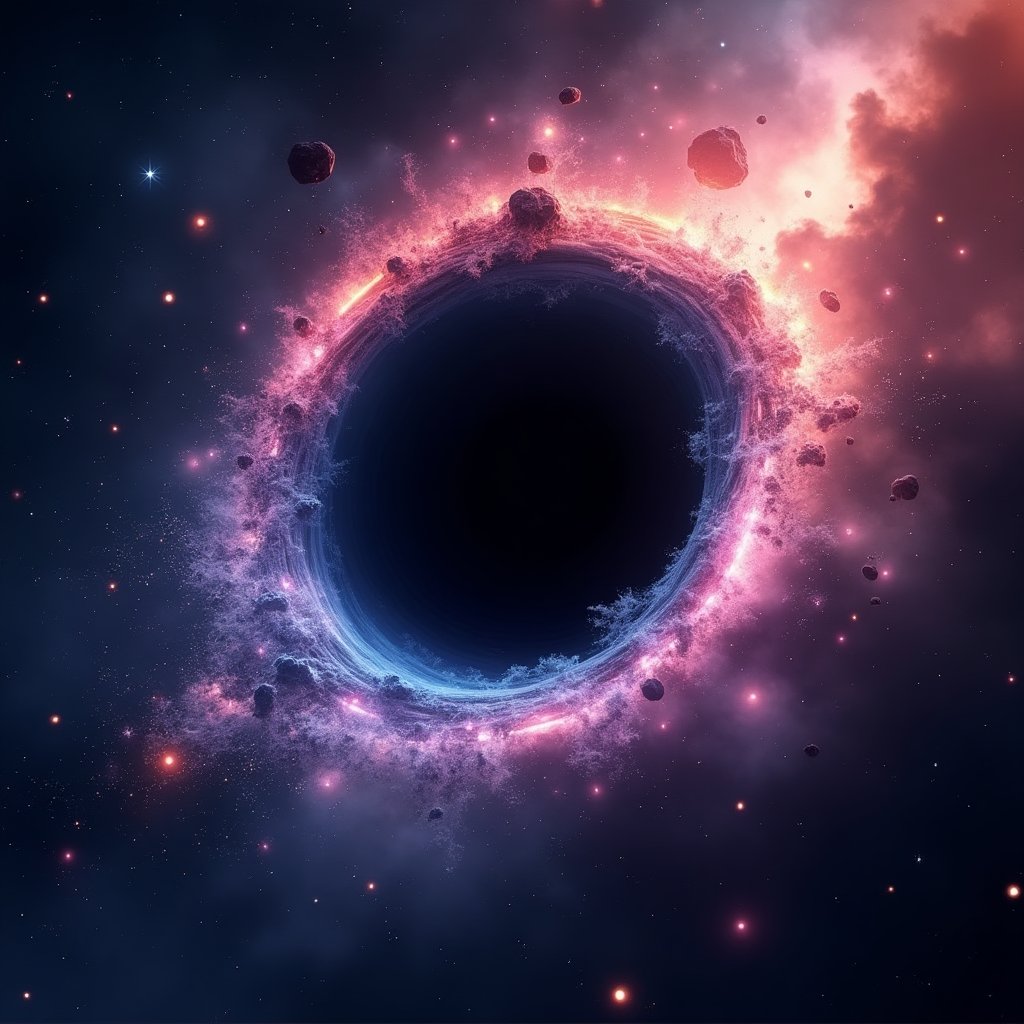
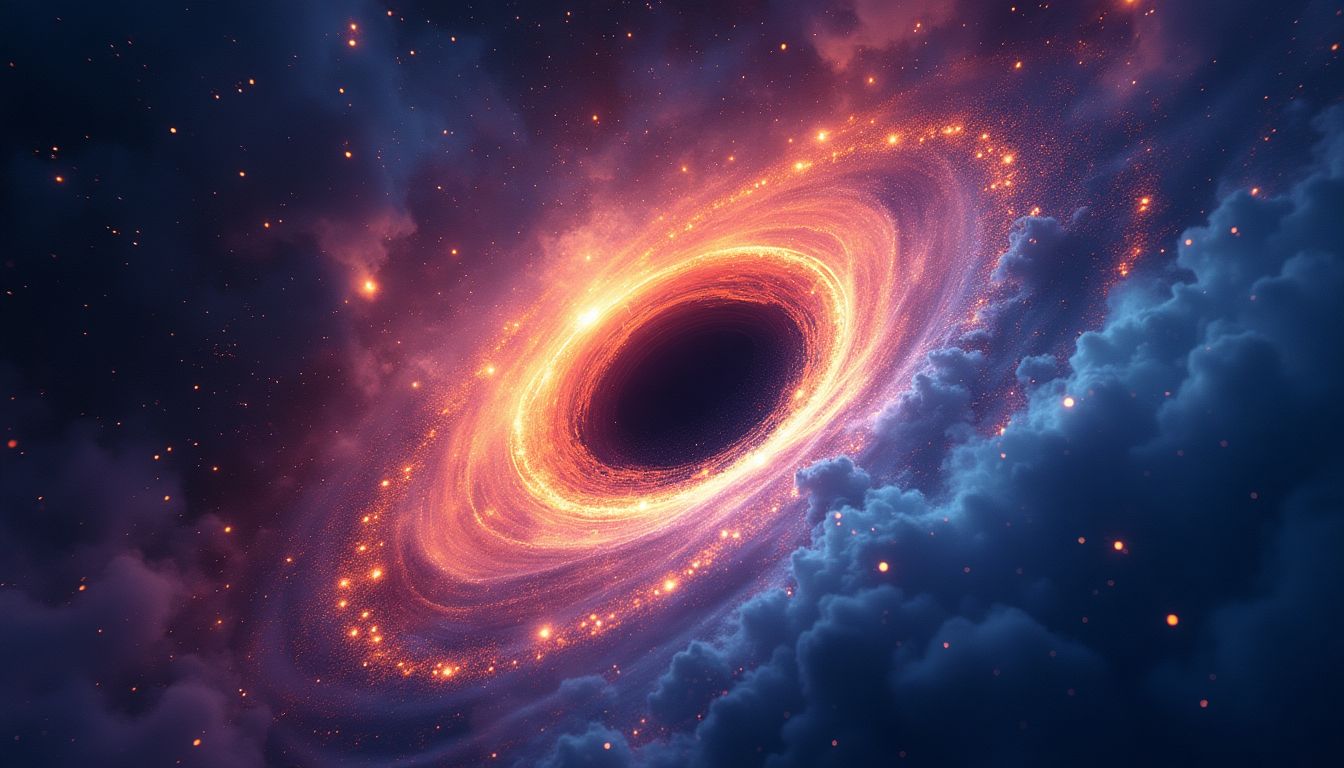

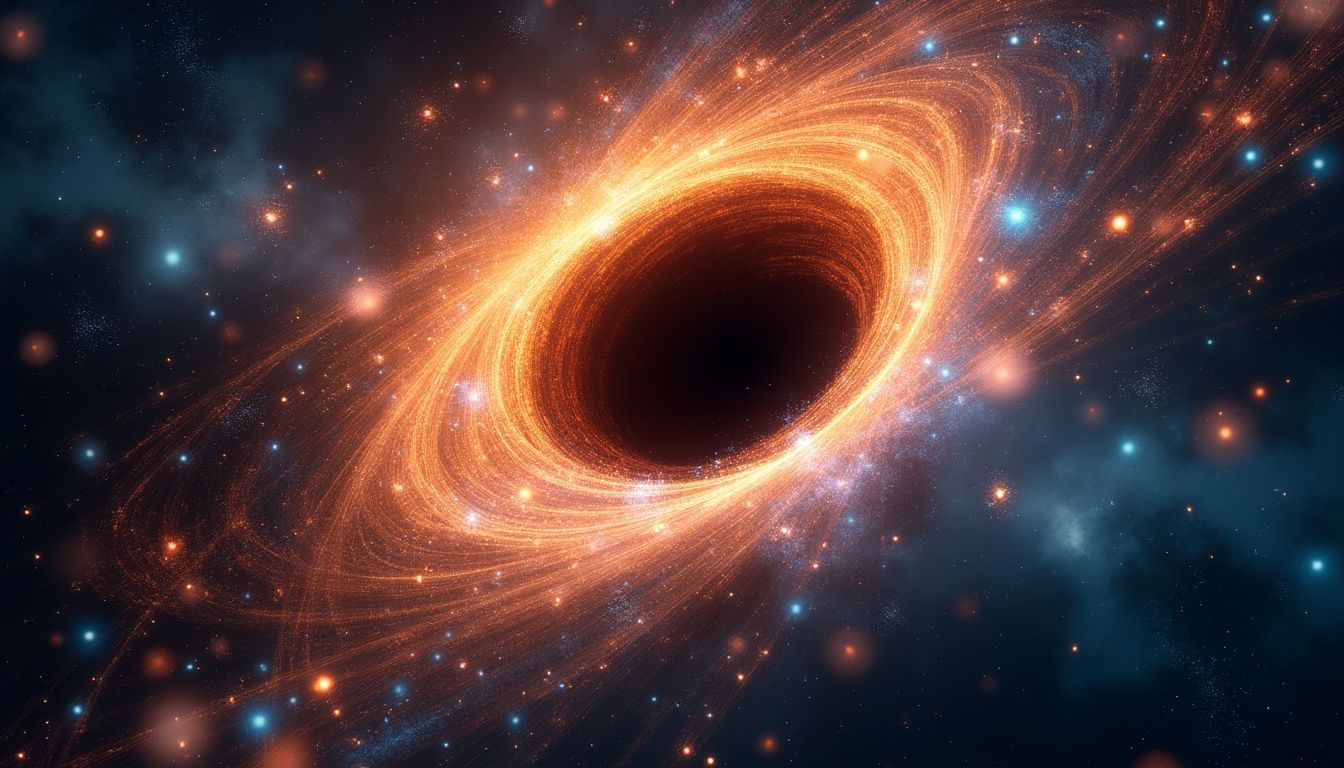
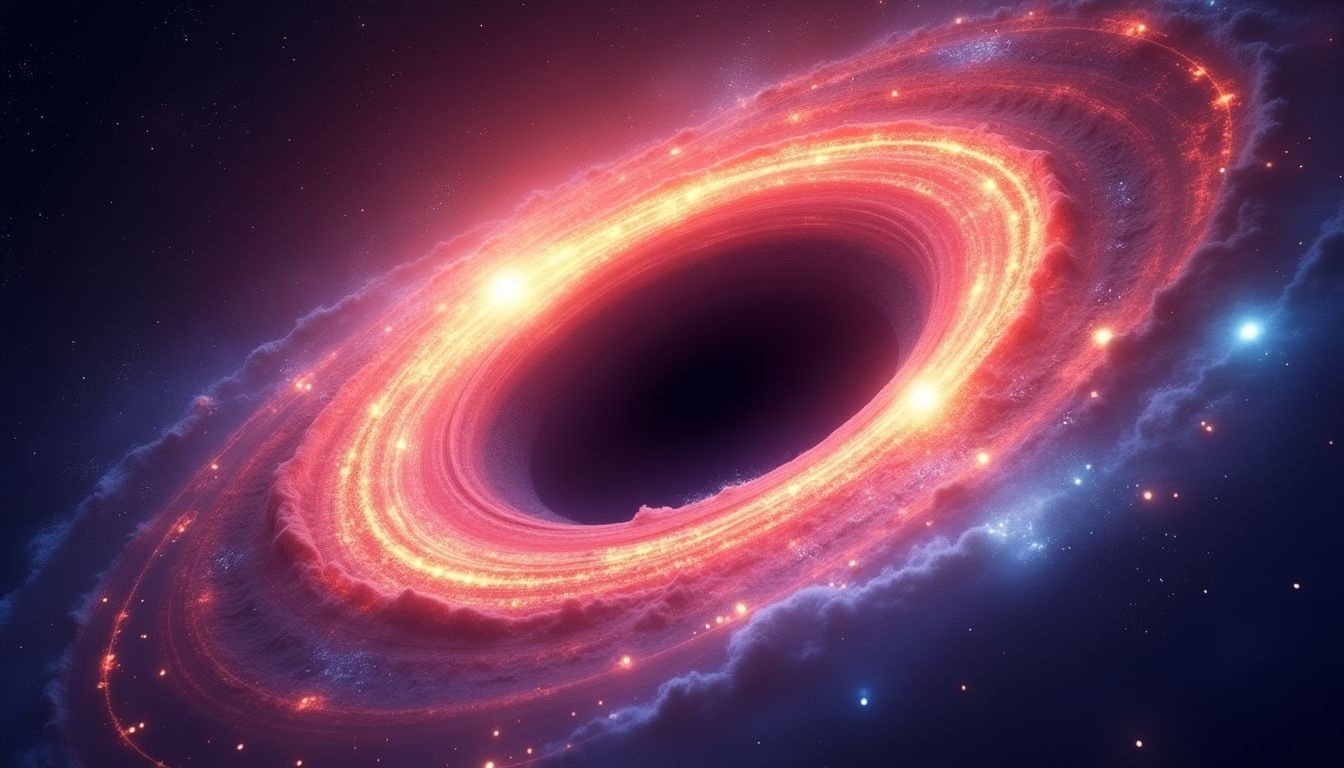






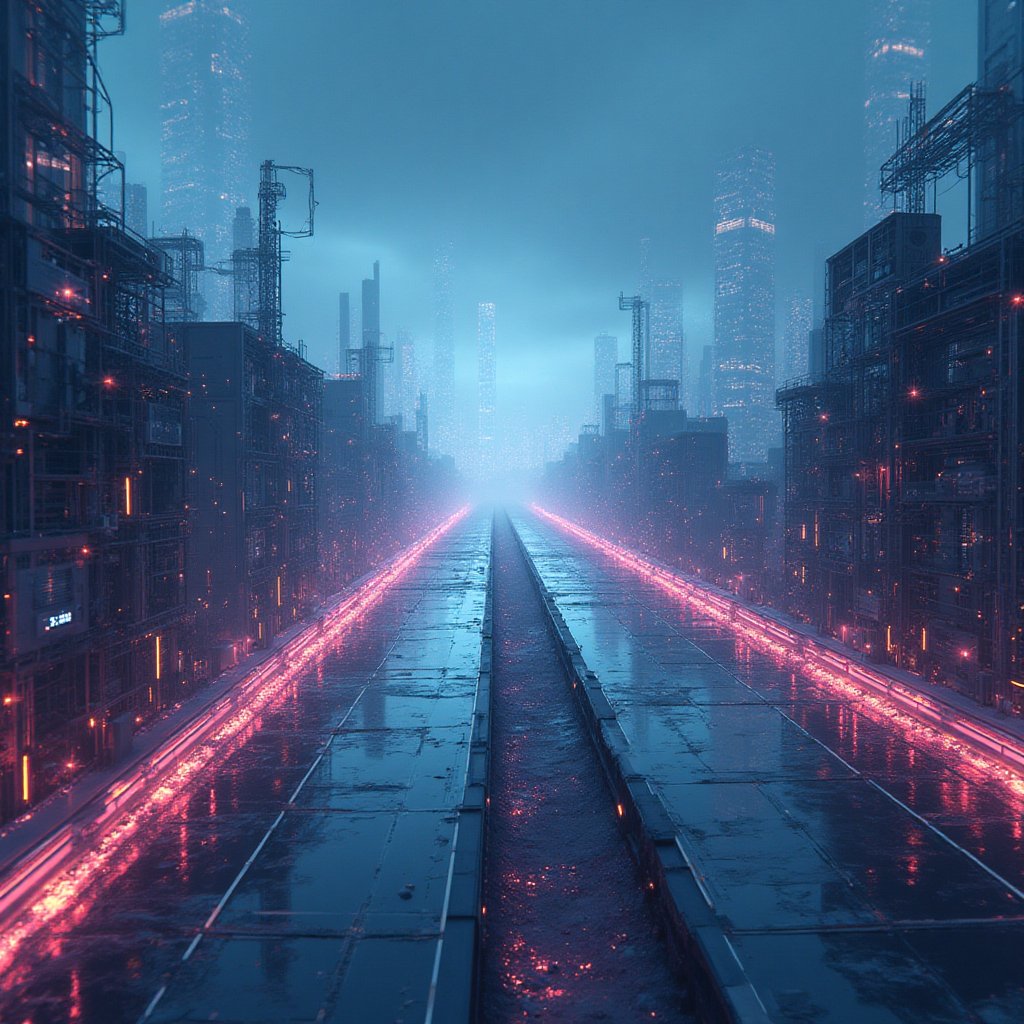
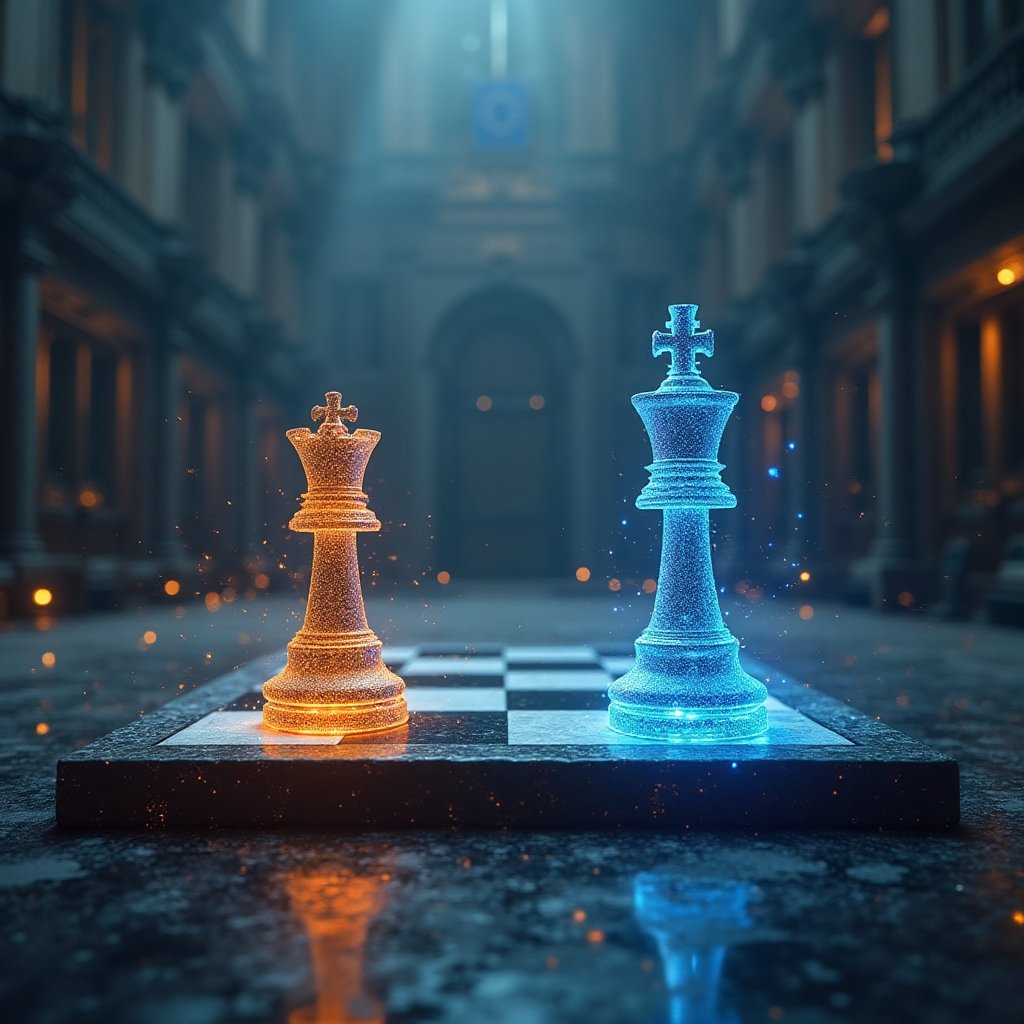
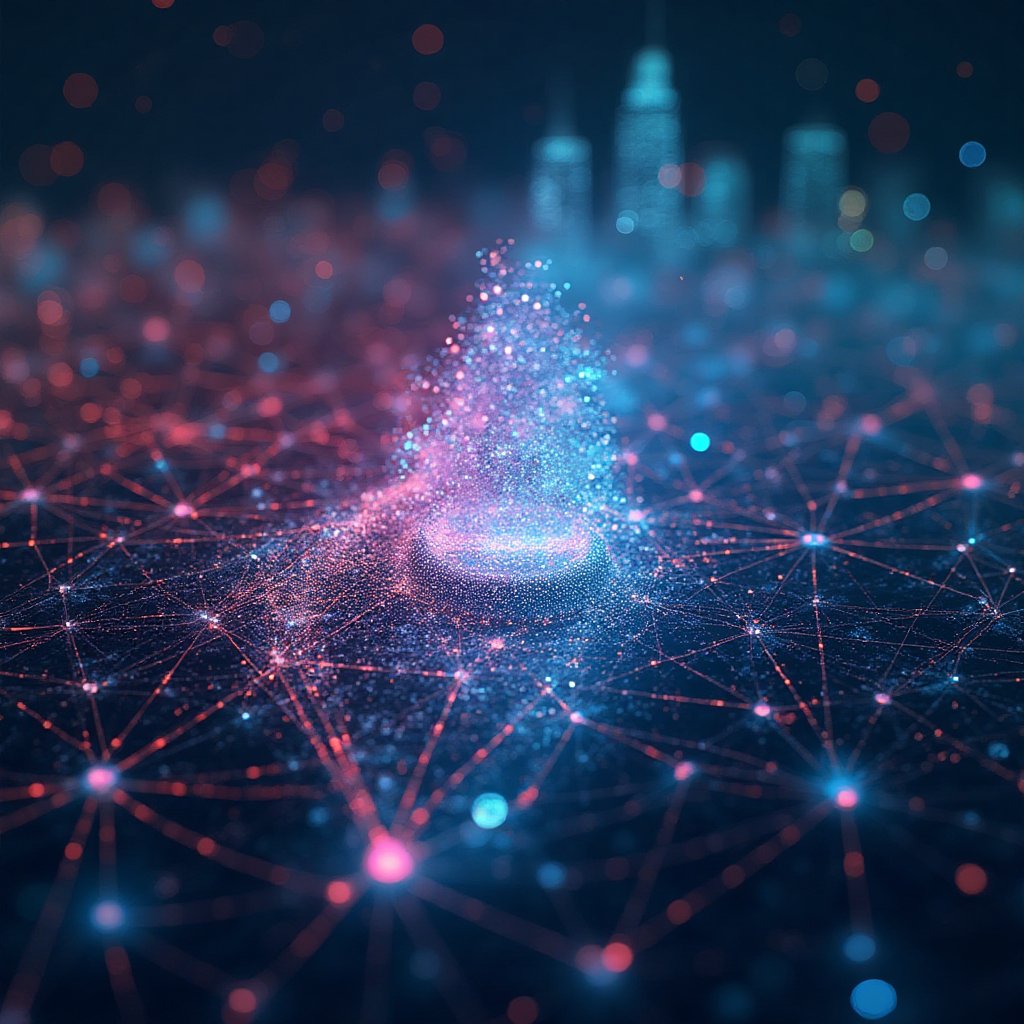















Post Comment
You must be logged in to post a comment.